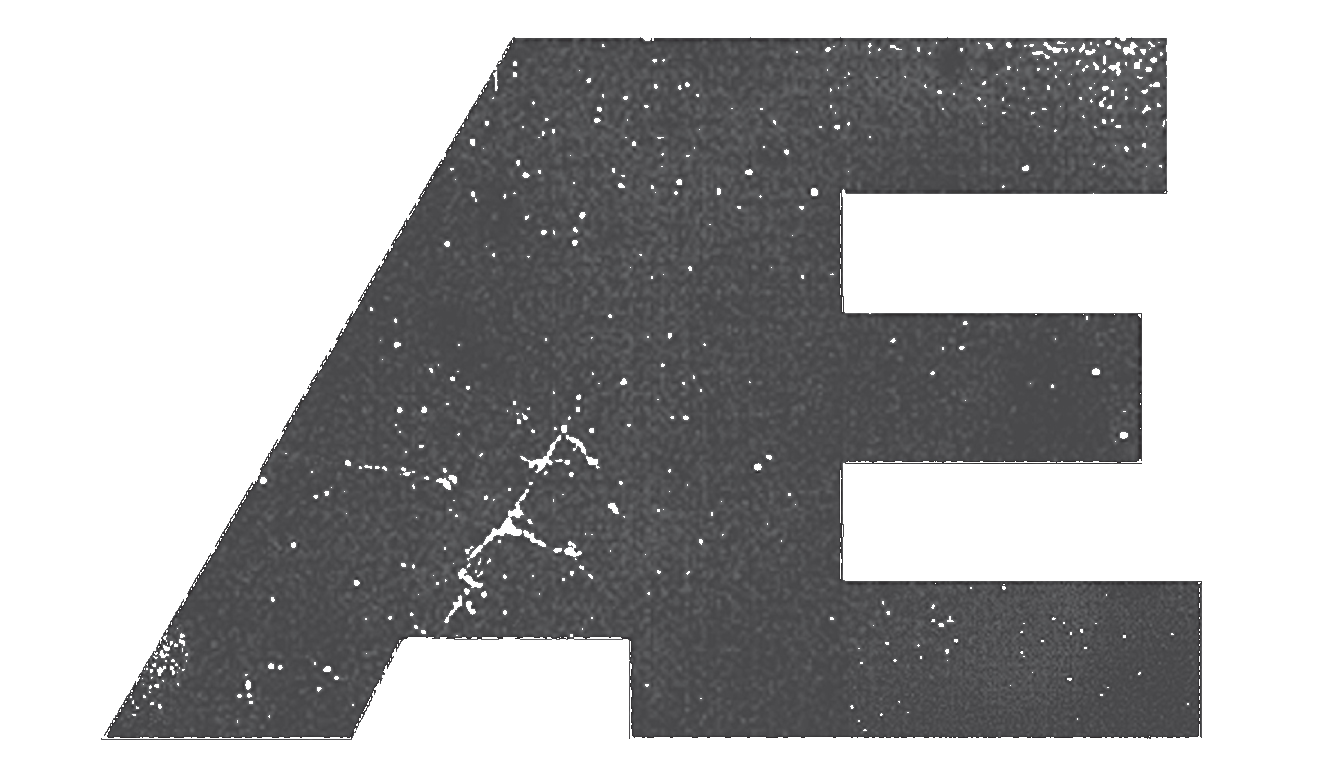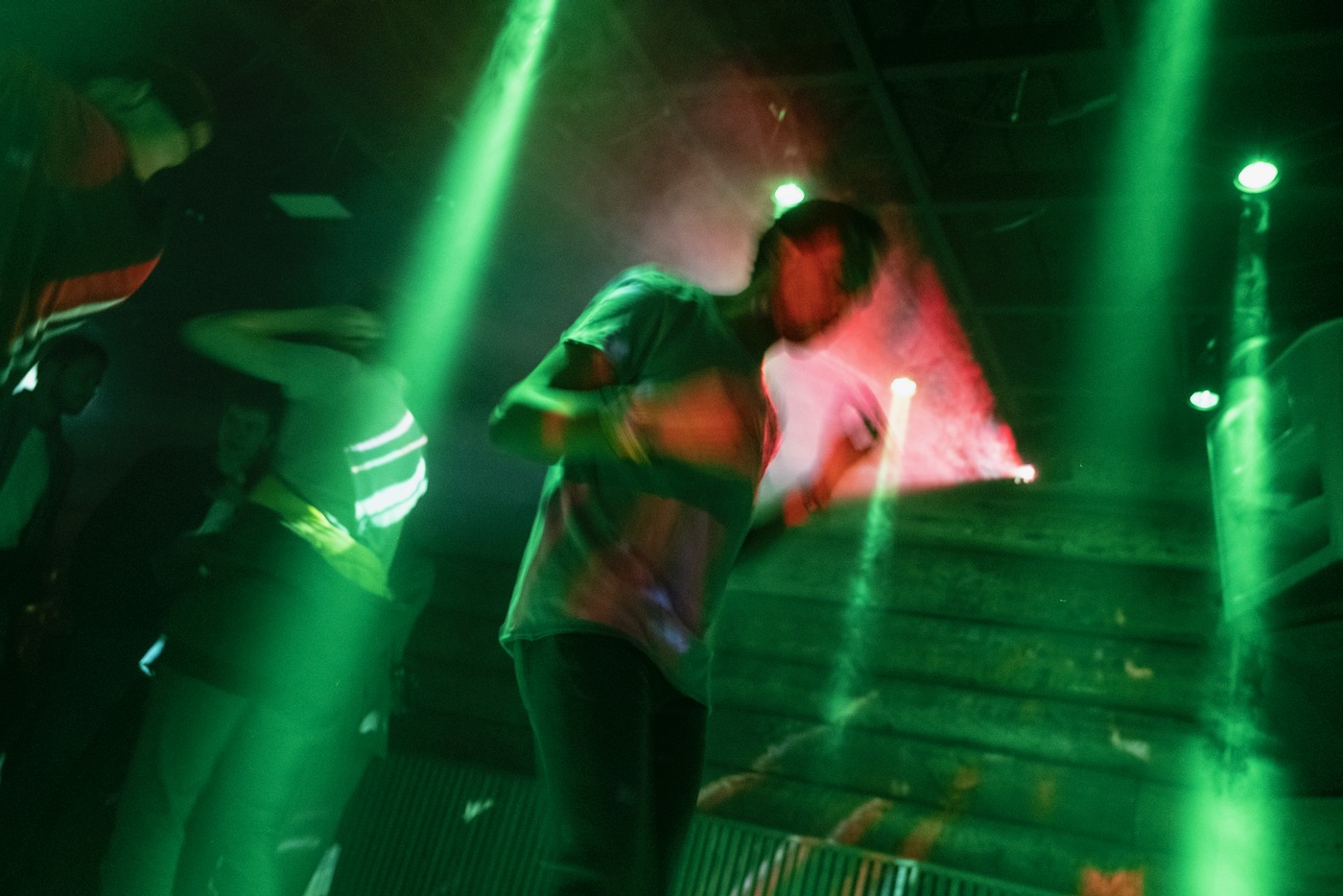We turn the attention to the dance floor to interview one of our regular patrons, and are astounded by what we find in this incredible individual and his work.
*Due to the sensitive nature of his work the subject of this interview has asked to remain anonymous. We ask that you respect his privacy.
When I see him, he is just a blur. He’s an inexhaustible source of energy and like many, I find myself gravitate towards him like a moth to flame. I’ve come to know him as the anonymous dancer that occupies the front of the DJ booth most Fridays. Some of the resident DJs have come to know him too. He doesn’t drink and he arrives early, securing a spot in front of the sauna where he’ll stay for the remainder of the night.
He’s uninhibited, always the first on the floor and often the last to abandon it. He’ll stop for a minute or two to have a conversation with a curious stranger, but he’ll get right back into it, as soon as the conversation lulls. Pumping his arms and jostling his feet, he is a frenzied movement of limbs that shows no fatigue.
Besides the odd greeting on arrival, I like to leave him to his own devices, and prefer to observe and admire his liberated movements as I sway in my own spot, some way off to the side.
Something of an enigma, he has been coming to Jaeger regularly for the past year. I’ve encountered him mostly on Fridays, but he’s no stranger to a Saturday jaunt on the tiles either. He came to us via DJ Charlotte Bendiks, but since then he’s become a welcomed presence at Jaeger, We’ve also come to know a little more of him as time progressed, and as is always the case there’s much more to him than meets the eye. So we’ve endeavoured to find out more about this remarkable man and his work.
Art in activism
“I like to be anonymous,” he says as we sit down for a conversation on a Friday afternoon. The coffee shop is an unusual setting and this is an unusual topic for any music-related media, but he immediately has my attention. I haven’t asked much about his life in the past, and was only made aware of his work within human rights through resident DJ, Ivaylo a short time before we decided to interview him.
He is a refugee and for over a decade he’s been working on educating people on the field of human rights through his organisation, Terram Pacis. “I founded it in 2010 and it’s basically my life,” he says over a large cup of hot chocolate. Terram Pacis is a non-profit organisation and he heads up each project personally. They’ve been granted special consultant status to the UN and work with various youth-oriented organisations. Working with communities in regions stretched from Sub-Saharan Africa to Eastern Europe, Terram Pacis’ main objective is to “advocate for human rights” with projects customised around specific problems.
He sees each project as “a work of art, where art becomes a form of activism” and approaches each project as a personal endeavour. “I need to see the problem and then that problem is a part of me,” he explains. There’s always an educational aspect to his work, whether he’s working with youth organisations or trying to inform older generations on the plight of the next. There’s a universal idea to “take people from different backgrounds and bring them into one space so they can learn together” and that can be applied to each project, regardless of the “problem” being addressed.
Terram Pacis “focusses on the rights that have been abused in the community rather than the broader human rights.” The organisation introduces people to the fundamental concept of human rights; their rights to protest and the due judiciary process, in an attempt to turn them into “human rights activists.” Then the “goal is to bring them to the same table” with other human rights activists in an effort to draw parallels to one another’s plight and instil the universal ideology of human rights.
“We can’t see human rights as one sided,” he stresses. “Excluding particular groups, because you are not interested in them, you can’t really call yourself a human rights activist. If we’re going to address gender-based violence for example, we then have to include everybody… an intersexed person might be 1 in 100, but that doesn’t mean you have to exclude them.” Part of his work with the UN for example is to challenge the type of language that exactly excludes these 1 in 100 minorities from the discussion.
His passion and dedication is humbling. Work consumes almost every minute of his waking life. He tries to limit “work hours” to 5 a day, but when you’re the founder of an organisation like Terram Pacis, your work consumes you. The only release comes by way of a dance floor. “Dancing is something that liberates me,” he says. “It’s a way for me to express who I am.” Whenever he goes to a new city, he seeks out a place to dance, and when he’s at home in Oslo, Jaeger is his first port of call.
It’s simply “easier to go to Jaeger,” and Fridays have particularly resonated with his own musical tastes. Fridays and Frædag offer him a “different kind of music and artists” and he’s specifically taken a real liking to “space disco” since moving to Norway. The “combination of disco and house music” appeals to his tastes “because it comes with different rhythms.” As somebody that enjoys dancing with his “mind” he prefers music where rhythms and beats vary, providing him with the mental stimulus to carry on dancing for “8 hours in a row.”
Growing up he wasn’t exposed to House music until came to Europe. Although Disco had been around, “people didn’t dance to Disco.” He was “listening to Jazz” in his youth. He prefers music with some meaning behind it and 60’s and 70’s Jazz created in that heated heart of the civil rights movement, was simply more accessible for a teen growing up in a post-war society. I don’t imagine there was much reason to dance back then.
Channeling the fear
He is somewhat reluctant to talk about those years, fearing it might get in the way of his humanitarian work, but he’s open to discuss it in general terms.
He was “very young when the war happened,” and yet one of the most tragic human events in recorded history and its aftermath is not something that leaves you likely. “It shapes who you are and end up becoming” and for him this has had a direct influence on his work today. He started “working with reconciliation” at a time when most of us were still just trying to navigate high school. Engaging young people with the same experiences, he sought to “shape a society that actually includes our ideas in the peace building process.” That’s when he started to become an advocate for human rights.
His work put him “in a problem with the government” and as a result he spent a stint in jail. When he got out, he moved to Norway as a refugee, setting in motion what would become Terram Pacis.
Between “human rights education, peace education and gender education” he is making a difference in the world, feeding on those experiences of his youth in an effort to affect important change. “You cannot overcome them,” he says of those experiences, “you just need to find a way to live them.” He prefers to channel those experiences into his work to “help people,” but it’s also been helping him. “I started my work to heal myself. You see the worst in humanity, and you also see the good, I chose to focus on the good.”
There’s a perpetual drive to what he does. Much like his dancing, he is constantly being encouraged forward in his work. I wonder if it’s the fear he might have felt during his youth. “In the beginning there is fear,” he answers. There’s “not enough food and not enough drinking water. You see people dying every day, and then fear becomes the norm. You’re no longer afraid because your mind and body is focussing on surviving.”
Today, “something is more important than that fear I had before. That’s where my optimism comes from – there’s nothing worse that can happen in my life that hasn’t happened before.”
That optimism has served him well in establishing Terram Pacis, but there are other aspects of his life where those experiences still affect him. For example, he has a “strange concept of friendship.” He always arrives alone whenever I see him and the brief encounters he has with those around him on the dance floor, never really mature into friendships or even friendly relationships. “If I have friends, I prefer them to not be in the same city,” he admits. “Being alone is what I understand.” He has little to no contact with anybody from his previous life, fearing for his and their safety, but it has done little to deter him to continue his work on human rights.
Liberation
Currently he has a few projects he is working on at the time of our conversation and the concerted focus he exudes while talking about them is quite infectious.
He talks eloquently about his work in projects that deal with subjects like internalised racism, the LGBT+ issue and the taboos around menstruation, making any problems the listener might be facing in his/her life feel trivial at best. He tries to engage the listener with subject matter in a language that is accessible from any perspective in an objective manner of speaking that makes you question why these issues remain prevalent in our society. And whenever I ask more searching questions about his personal harrowing experiences, he quickly turns the attention back to his work.
The last thing we talk about is his work in trying to eradicate the tax on menstrual products, and I find it hard to segue into a question about the night ahead. It seems so arbitrary now in the face of what he does for a living at Terram Pacis and his work seems a world away from the hedonistic associations the dance floor evokes. The dance floor doesn’t really compare to something like Terram Pacis, yet if it weren’t for the dance floor we wouldn’t have known about this incredible individual and his work. I’m suddenly reminded me of something I read recently; if there are more than two people in a room, you have politics.
We’ve been talking for an hour now, and I have more questions than what I have answers to, but I sense I might be testing the limits with this private individual. I greet him into the Oslo’s cold night only to see him later on the dance floor. He remains a blur.

